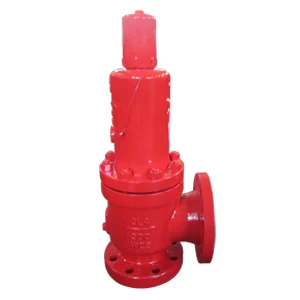Selection of safety valve type:
1. Determining valve type
1. Determining valve type
| Conditions of Use | Recommended Type of Safety Valve |
| Flammable Gas, Toxic Gas, Refrigerant, Polluting Gas | Closed Safety Valve |
| Water Vapor, High Temperature Gas, Air | Open Safety Valve |
| High - pressure Container, Large Safety Relieving Capacity | Fully-opening Safety Valve |
| The backpressure is atmos, and the change of backpressure is small. | Conventional Safety Valve |
| The back pressure is not fixed and has considerable variation | Back Pressure Balanced Safety Valve |
| The reaction is required to be rapid. | Direct-acting Safety Valve |
| Relieving Capacity, Caliber, Large Pressure, High Requirements of Sealing | Pilot Operated Safety Valve |
| Mobile Vibrating Compression Equipment | Spring Safety Valve |
| Higher Medium Temperature | Safety with Radiator |
2. Nominal pressure and pressure rank: Select the appropriate spring grade based on nominal pressure. Safety valves are generally fitted with springs of different stiffness by working pressure grades within the nominal pressure range.
3. The relieving capacity of valve: The relieving capacity of safety valve must be greater than the safety relieving capacity of the container. Therefore, the safety valve is selected to first determine the discharge area required by the safety valve and the diameter of the flow passage.
4. Working pressure level: The working pressure of the safety valve and spring have different meanings. Working pressure refers to the static pressure that the safety valve is subjected to before the valve is in normal operation, which is the same as the working pressure of the protected system or equipment. The working pressure level of the spring refers to the working pressure range allowed by a spring, in which the opening pressure of the safety valve can be adjusted by changing the prestressed compression of the spring.
5. The nominal diameter: The nominal diameter of the safety valve shall be determined according to the discharge necessary for the protected system. The rated displacement of the safety valve used shall be greater than and as close as possible to the required discharge. The discharge required by the protected system refers to the medium that must be excluded in the event of abnormal over pressure in the system, which is determined by the working conditions, capacity and possible causes of over pressure.
6. Material: Selection of safety valve material should take into account the working temperature, working pressure, performance of the medium and the manufacturability of the material.
Notice when ordering safety valve:
Order safety valves should indicate the following:
1. Type, nominal diameter and nominal pressure of safety valve
2. Working pressure level or open pressure value of safety Valve
3. Material of valve body and sealing surface
4. When ordering special safety valve, in addition to the above, note the following:
1) Maximum value of safety valve discharge pressure and minimum valve of re-seating pressure (or opening-closing pressure difference)
2) Required discharge of protected systems or equipment and number of valves to be installed
3) Medium used and its weight (liquid) or molecular weight (gas)
4) Medium temperature at the valve inlet
5) Type and value of back pressure on valve
6) other requirements

